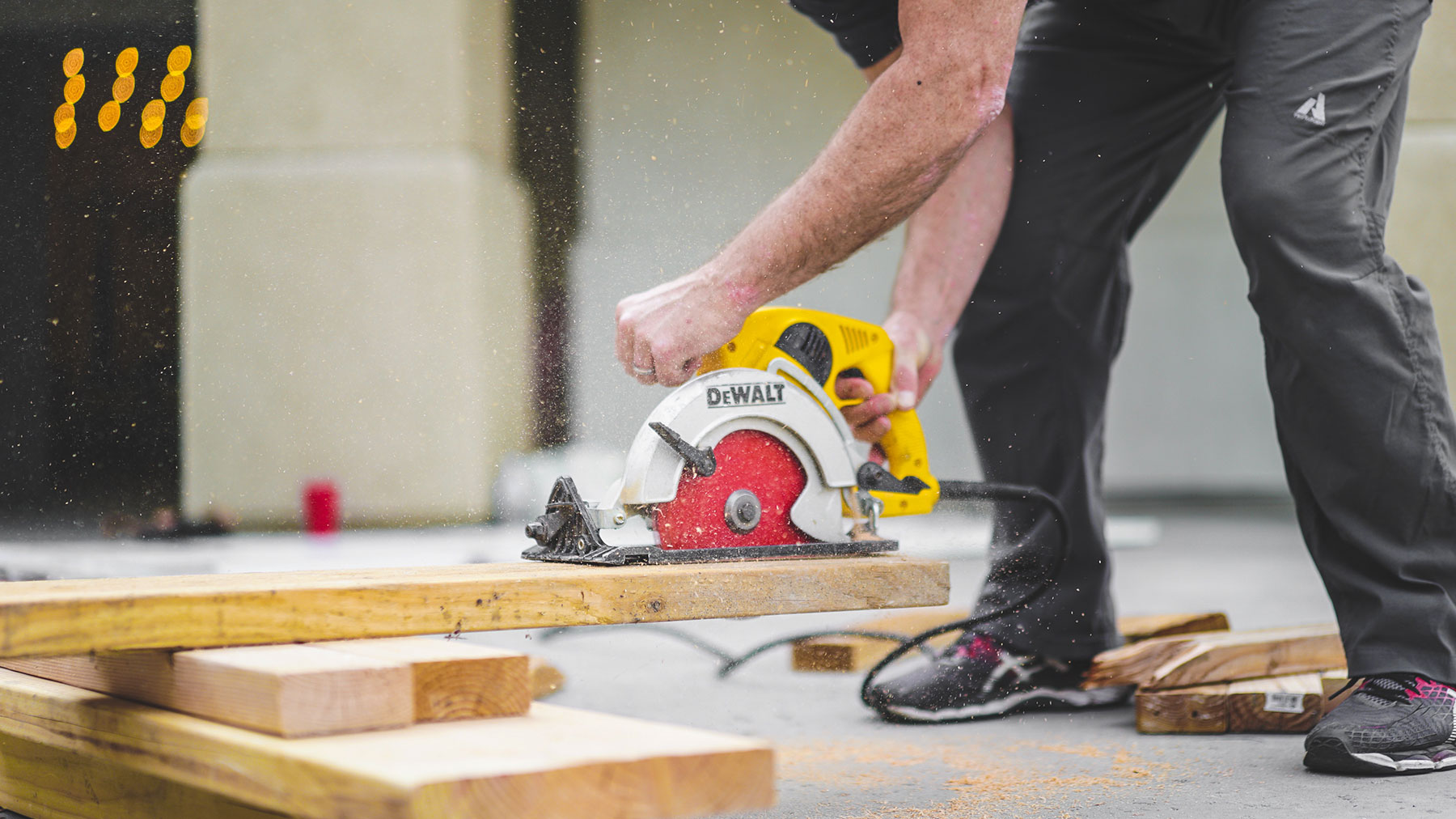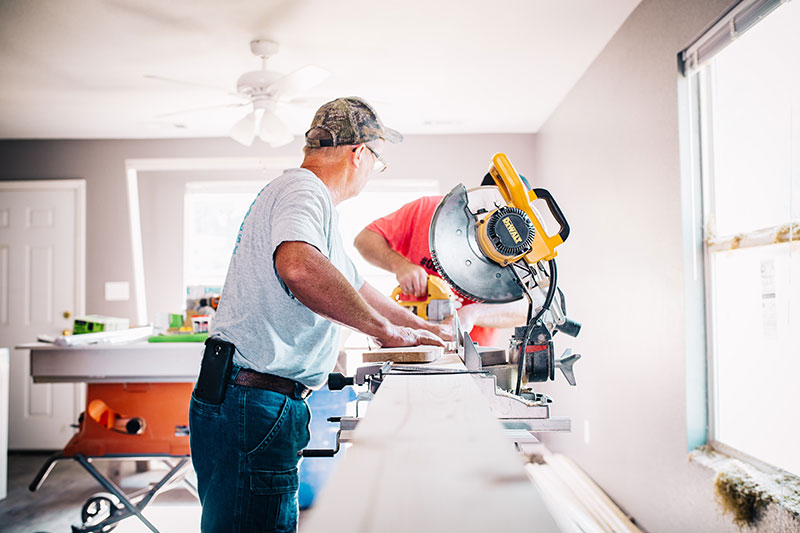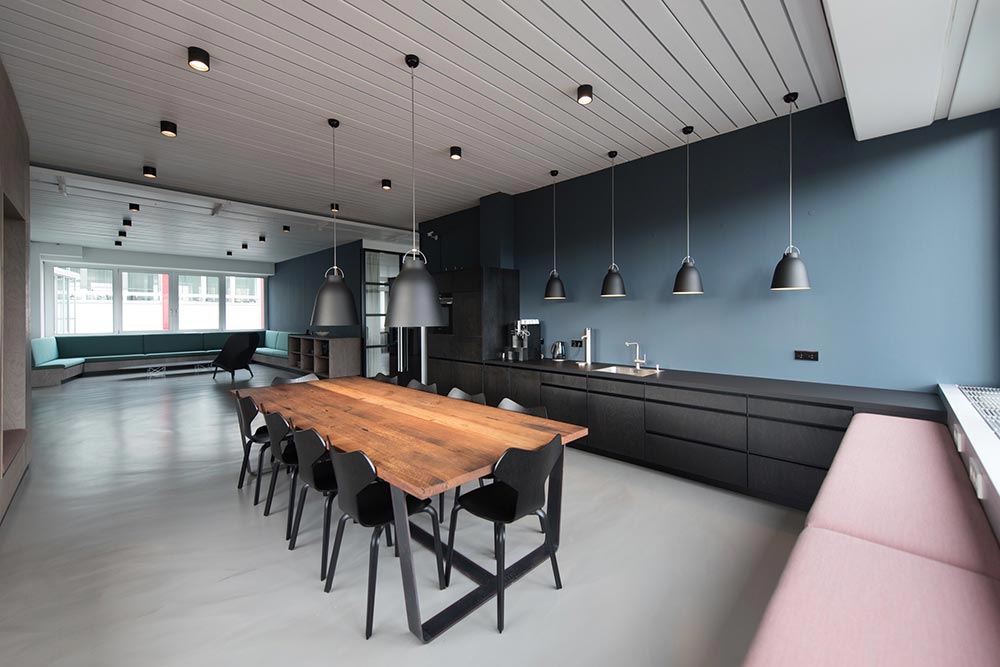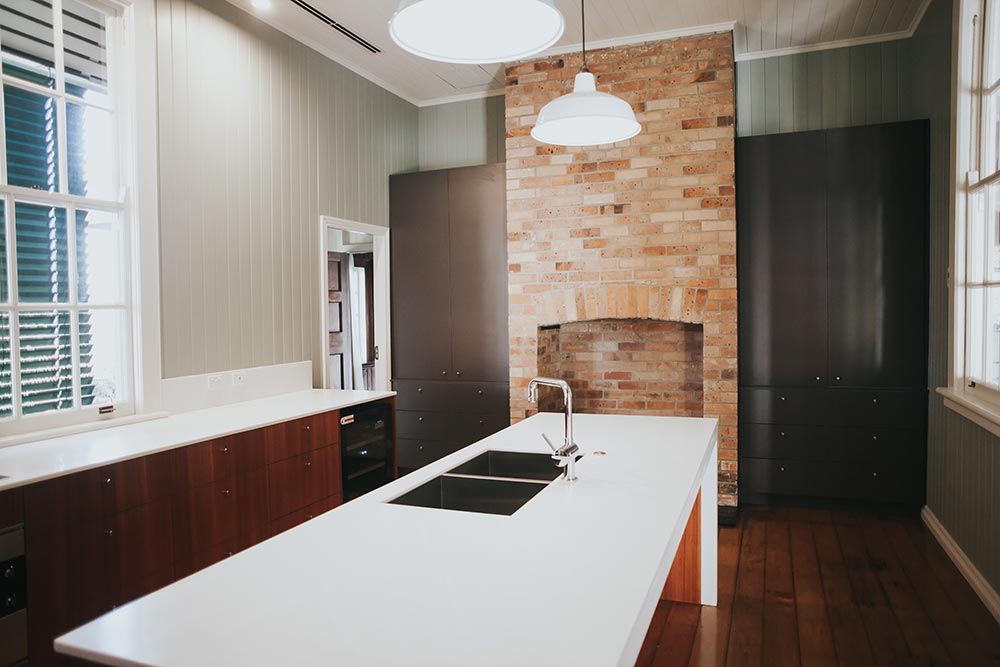
GEORGIA AND DAUGHTER
We Build Inspired Home Spaces.




We Bring Ideas Home.
Ut elit tellus, luctus nec ullamcorper mattis, pulvinar dapibus leo. Lorem ipsum dolor sit amet, consectetur adipiscing elit. Ut elit tellus, luctus nec ullamcorper mattis, pulvinar dapibus leo.
- Interior Design
- Architecture
- Project Management

Unlock Next Level Freight Visibility and Control
Unlock Next Level Freight Visibility and Control
In today’s fast-paced logistics environment, businesses must stay ahead of the curve by improving the management of freight. Freight visibility and control are essential components of an efficient supply chain, enabling companies to track shipments, optimise routes, and ensure timely deliveries. However, the complexity of modern freight operations can make this task challenging. To truly unlock next level freight visibility and control, businesses need to implement advanced technologies and strategies that offer real-time tracking, predictive insights, and end-to-end control over the supply chain.
The Importance of Freight Visibility and Control
Freight visibility refers to the ability to monitor the movement of goods at every stage of the supply chain, from the initial dispatch to the final delivery. It provides businesses with valuable insights into where their shipments are, their current status, and any potential delays or disruptions.
Freight control, on the other hand, is the ability to manage and optimise the transportation of goods, ensuring that operations run smoothly and that resources are used efficiently.
Having real-time visibility and control over freight operations can help companies in many ways. For instance, it allows businesses to make proactive decisions based on data, rather than reacting to problems after they arise. With better visibility, companies can enhance customer service by providing accurate delivery times, reduce costs through route optimisation, and improve operational efficiency.

How Technology Enhances Freight Visibility
The advent of new technologies has revolutionised the way companies manage their freight operations. From tracking and monitoring tools to data analytics, these technologies offer enhanced visibility, real-time monitoring, and greater control over freight management.
GPS Tracking Systems
One of the most common tools for unlocking next level freight visibility is GPS tracking. By placing GPS trackers on vehicles or shipments, businesses can monitor the exact location of their freight at any given time. This enables companies to track the progress of deliveries, estimate arrival times, and quickly respond to any potential delays.
GPS tracking systems are especially useful for businesses that rely on large fleets or those that need to manage complex transportation networks. With accurate location data, businesses can avoid delays caused by traffic congestion, road closures, or other disruptions.
IoT-Enabled Devices
The Internet of Things (IoT) has played a significant role in enhancing freight visibility and control. IoT devices, such as sensors, can be attached to shipments to monitor various factors such as temperature, humidity, and shock. This is particularly valuable for businesses that handle perishable goods or fragile items, as these sensors can alert businesses if conditions fall outside of the desired range.
For example, if a shipment of medical supplies is exposed to temperatures that could compromise its quality, IoT devices can notify the company immediately, allowing them to take corrective action. This level of visibility not only ensures the safety and quality of goods but also enables businesses to optimise their operations based on real-time data.
Advanced Freight Management Software
Freight management software is another critical tool for unlocking next level freight visibility and control. These software solutions allow businesses to manage all aspects of their freight operations, from scheduling and routing to tracking and reporting.
Many freight management platforms integrate with other systems, such as inventory management and customer relationship management (CRM) tools, providing businesses with a comprehensive view of their supply chain.
With advanced analytics and reporting capabilities, these platforms enable businesses to gain insights into their freight operations. For instance, they can analyse delivery times, identify bottlenecks, and forecast potential disruptions, allowing businesses to make data-driven decisions and optimise their operations.
Benefits of Unlocking Freight Visibility and Control
The benefits of unlocking next level freight visibility and control are clear. Companies that leverage technology to improve their freight management operations can achieve greater efficiency, reduce costs, and improve customer satisfaction.
Improved Operational Efficiency
One of the most significant benefits of enhanced freight visibility is the improvement in operational efficiency. With real-time data and insights, businesses can optimise their processes, reduce delays, and ensure that shipments are delivered on time. This results in more efficient use of resources, including fuel, labour, and equipment.
For example, businesses can use freight management software to optimise delivery routes, taking into account factors such as traffic conditions, weather, and road closures. By reducing fuel consumption and unnecessary miles driven, companies can lower their transportation costs and improve their environmental impact.
Better Customer Satisfaction
In today’s competitive market, customer satisfaction is a key differentiator. By offering next level freight visibility and control, businesses can provide their customers with accurate delivery times and updates, enhancing the overall customer experience.
Real-time tracking and visibility allow businesses to keep customers informed about the status of their shipments. If a delay occurs, customers can be notified in advance, allowing them to adjust their plans accordingly. This level of transparency builds trust and helps businesses maintain strong customer relationships.
Proactive Risk Management
Freight visibility also allows businesses to identify and mitigate risks before they become major issues. With the ability to monitor shipments in real time, businesses can detect potential disruptions, such as delays, traffic accidents, or adverse weather conditions. This allows them to take proactive measures, such as rerouting shipments or notifying customers of expected delays.
By identifying risks early, businesses can minimise the impact of disruptions on their supply chain, reduce the likelihood of costly delays, and maintain a steady flow of goods.
Increased Cost Savings
Unlocking next level freight visibility and control can also result in significant cost savings. With better insights into freight operations, businesses can optimise their routes, reduce fuel consumption, and avoid unnecessary delays. These improvements translate into lower transportation costs, which can have a direct impact on the company’s bottom line.
Additionally, by using advanced freight management software to automate tasks such as scheduling, billing, and tracking, businesses can reduce the need for manual labour, further reducing operational costs.
Key Strategies for Improving Freight Visibility and Control
There are several strategies that businesses can implement to improve freight visibility and control. These strategies often involve adopting the right technologies, optimising processes, and working closely with partners across the supply chain.
Integrate with Partners and Carriers
One of the most effective ways to improve freight visibility and control is to integrate with partners and carriers. By sharing data with third-party logistics providers (3PLs), suppliers, and customers, businesses can gain a more comprehensive view of their supply chain.
Through this integration, businesses can track shipments in real time, monitor inventory levels, and coordinate deliveries more effectively. This collaboration ensures that all stakeholders have access to the same information, reducing the risk of errors and improving overall efficiency.
Use Data Analytics for Decision-Making
Data analytics is a powerful tool for improving freight visibility and control. By analysing data from GPS tracking systems, IoT devices, and freight management software, businesses can identify patterns, optimise routes, and forecast potential issues.
For instance, data analytics can help businesses determine the most efficient routes based on factors such as traffic, weather, and delivery schedules. It can also help businesses identify areas where they can reduce costs, such as by consolidating shipments or reducing idle time.
Invest in Real-Time Monitoring and Tracking Tools
To truly unlock next level freight visibility, businesses must invest in real-time monitoring and tracking tools. This includes GPS tracking systems, IoT-enabled devices, and freight management software. These tools provide businesses with up-to-the-minute information on the location, condition, and status of their shipments, allowing them to make informed decisions and respond quickly to any issues that arise.
Frequently Asked Questions
How can freight visibility help reduce supply chain disruptions?
Freight visibility enables businesses to monitor shipments in real time, allowing them to identify potential disruptions early. By addressing issues proactively, such as rerouting shipments or notifying customers of delays, businesses can reduce the impact of disruptions on their supply chain.
What technologies improve freight control?
Technologies such as GPS tracking, IoT-enabled devices, and advanced freight management software improve freight control by providing real-time data, optimising routes, and automating tasks. These technologies enable businesses to manage their freight operations more efficiently and effectively.
How does improved freight visibility benefit customers?
Improved freight visibility benefits customers by providing them with accurate delivery times, real-time updates, and proactive communication regarding any delays. This transparency enhances the customer experience and builds trust in the business.
Conclusion
Unlocking next level freight visibility and control is essential for businesses looking to improve their supply chain operations. By leveraging advanced technologies such as GPS tracking, IoT devices, and freight management software, businesses can enhance their ability to track and manage shipments, reduce costs, and improve customer satisfaction.
By implementing the right strategies, businesses can gain greater control over their freight operations, ensuring timely deliveries and efficient use of resources.
Custom Ute Trays with Integrated Toolboxes and Storage Solutions
For many tradespeople and businesses, the vehicle used for work is more than just a mode of transportation. It’s a mobile workspace that carries essential tools, equipment, and materials. Custom ute trays with integrated toolboxes and storage solutions provide an ideal solution for enhancing productivity and efficiency on the job. Understanding the 4×2 car meaning might help you choose the best setup for your work vehicle, but it’s the customisation of your ute tray that can truly optimise its function.

In this article, we’ll explore how custom ute trays, designed with integrated toolboxes and storage solutions, can provide convenience, security, and durability for anyone who relies on their vehicle for daily tasks. Whether you’re a tradie, a business owner, or an outdoor enthusiast, these trays offer a range of benefits to keep your tools safe and your work organised.
What Are Custom Ute Trays with Integrated Toolboxes and Storage Solutions?
Custom ute trays are built to provide a flexible, tailored solution for work vehicles. Unlike standard trays, these custom options are designed to meet the unique needs of the user, whether it’s for carrying tools, machinery, or supplies. Integrated toolboxes and storage solutions are built into the tray to provide secure and organised spaces for storing tools and other equipment.
Why Custom Ute Trays Are Important
A ute tray serves as more than just a flatbed for carrying cargo. For many industries, it’s a vital part of the workflow. Custom ute trays with integrated toolboxes ensure that everything has its place, reducing the time spent searching for tools, improving organisation, and ensuring that valuable equipment is stored safely.
These trays are highly beneficial for tradespeople such as electricians, plumbers, carpenters, and builders who often need to transport a variety of tools and materials to and from job sites. Having a tray that’s specifically designed to meet their needs allows for better use of the vehicle space and increases overall efficiency.
Key Features of Custom Ute Trays with Toolboxes and Storage
When selecting a custom ute tray, several features make it the ideal choice for storing tools and equipment. These features enhance the functionality of the tray, making it more than just a transport solution but also a mobile workspace.
Integrated Toolboxes for Secure Storage
One of the most important features of custom ute trays is the inclusion of integrated toolboxes. These lockable storage compartments provide a secure place to store valuable tools and equipment. Toolboxes can be customised in terms of size, shape, and position to suit the specific needs of the user, ensuring that tools are kept safe from theft and damage while on the move.
Benefits of Lockable Toolboxes
Lockable toolboxes add an extra layer of security, which is particularly useful for tradies who work on job sites where tools may be at risk of theft. Whether you’re in the city or on a remote site, these toolboxes ensure that your gear remains safe, even when the vehicle is left unattended.
Custom Size and Placement
Custom trays allow for flexible storage options, so users can decide how large the toolbox should be and where it should be placed on the tray. Toolboxes can be integrated into the sides or underneath the tray, depending on the space available and the type of tools being stored. This ensures that tools are accessible but well-secured during transit.
Adjustable Shelving and Racking Systems
For industries that require the transportation of larger or bulkier items, adjustable shelving and racking systems can be integrated into the ute tray. These systems allow for the organisation of heavy equipment such as power tools, piping, and ladders, making them easy to access and reducing the risk of damage during transport.
Benefits of Adjustable Shelving
Adjustable shelving makes it easy to organise tools and materials of various sizes. The ability to adjust the shelving to fit specific equipment helps ensure that the tray remains versatile and can be adapted as your needs change. These shelving systems make it easier to find and access items, reducing downtime spent looking for tools.
Racking for Larger Equipment
Racks are another feature that can be added to a custom ute tray. Whether you need to carry a ladder, timber, or longer pieces of equipment, racking systems provide the necessary support. Custom racking can be installed along the sides or at the back of the tray to ensure that larger equipment stays securely in place during transit.
Water-Resistant and Durable Construction
When considering the material of the custom ute tray, durability and water resistance are essential. Aluminium is a popular choice due to its lightweight, strong, and corrosion-resistant properties. The water-resistant nature of aluminium helps protect tools and materials from rust or damage caused by moisture. Additionally, the tray’s construction should be rugged enough to withstand heavy use on construction sites, agricultural fields, or off-road terrain.
Why Aluminium Is the Preferred Material
Aluminium’s strength-to-weight ratio makes it the perfect material for custom ute trays. It is lightweight yet incredibly durable, meaning it won’t add unnecessary weight to the vehicle but will still carry heavy loads. This is particularly beneficial for those who need to maximise their vehicle’s payload while still maintaining fuel efficiency.
Easy Access and Organisation
A key element of custom ute trays is the ease of access and organisation. With the right customisation, everything has a dedicated space, which reduces the time spent searching for tools or materials. Organisation is key for efficiency, especially when working in fast-paced environments or on tight deadlines.
Drawer Systems for Tools
For tradespeople who need quick access to smaller tools or components, drawer systems can be added to the tray. These drawers keep tools organised by size, type, or job, ensuring that everything is within easy reach. Drawers can be securely locked to protect the tools while on the move.
Side and Underbody Storage
In addition to toolboxes, side and underbody storage options allow users to make the most of available space. These compartments can be used to store items like hoses, ropes, or smaller equipment that might not fit in the main tray. Side and underbody storage offer a great way to keep larger items separate from smaller tools, ensuring that the tray stays organised and efficient.
The Advantages of Custom Ute Trays for Businesses
For businesses that rely on a fleet of vehicles, custom ute trays offer significant advantages in terms of productivity, security, and cost savings. A well-organised vehicle fleet helps reduce operational inefficiencies, ensuring that each vehicle performs optimally.
Improving Fleet Management
When each vehicle in a fleet has a customised ute tray, fleet managers can ensure consistency in storage and equipment organisation. This means that employees can work in a more efficient manner, knowing that tools and materials will be available and accessible when needed. A well-maintained fleet reduces the chance of delays or issues caused by disorganised equipment storage.
Reducing Downtime and Improving Efficiency
Custom ute trays with integrated storage solutions help businesses reduce downtime. When everything has its designated place, there is no need to spend extra time locating equipment, which can be a common issue when dealing with poorly organised vehicles. The more organised the vehicle, the faster employees can complete tasks, improving overall business efficiency.
Protecting Valuable Tools and Equipment
For businesses, protecting tools and equipment is a priority, especially when dealing with high-value items. Integrated toolboxes and secure storage solutions help minimise the risk of theft or damage. This is particularly important for businesses that rely on expensive machinery or tools for their daily operations.
How to Choose the Right Custom Ute Tray
Selecting the right custom ute tray for your needs involves considering a few important factors, such as the type of work you do, the weight of the items you carry, and your vehicle’s capacity.
Consider Your Vehicle’s Payload Capacity
Before choosing a custom ute tray, it’s important to assess your vehicle’s payload capacity. Ensure that the tray you select does not exceed the recommended weight limit for your vehicle. Overloading your vehicle can lead to mechanical issues, reduced fuel efficiency, and safety risks.
Think About the Type of Tools and Equipment You Carry
The type of tools and equipment you carry will influence the tray’s design. For example, if you need to transport heavy machinery or larger items, the tray will need to be reinforced and designed with additional support. For those who carry smaller tools, more compact storage solutions will suffice.
Custom Design Features
Consider what additional features you may need, such as extra compartments, weather-resistant finishes, or specific racks for larger tools. A custom ute tray can be designed to suit your specific needs, making your vehicle more functional and efficient.
Frequently Asked Questions
What are the benefits of custom ute trays for tradespeople?
Custom ute trays provide tradespeople with the ability to organise tools and equipment efficiently, improve security with lockable compartments, and maximise payload capacity. They can also be designed to suit specific trade needs, making them more versatile.
Can I install a custom ute tray on any vehicle?
Most vehicles can be fitted with a custom ute tray, but it’s essential to ensure that the tray is compatible with the vehicle’s specifications. Consult with a professional to determine the right size and design for your vehicle.
How long will a custom ute tray last?
The lifespan of a custom ute tray depends on the material, usage, and maintenance. High-quality aluminium trays are highly durable and resistant to corrosion, ensuring that they last for many years with proper care.
Conclusion
Custom ute trays with integrated toolboxes and storage solutions are the perfect addition to any work vehicle, offering security, organisation, and durability. Whether you’re a tradie in need of a reliable solution for carrying tools or a business owner looking to optimise your fleet, a custom tray can significantly enhance your vehicle’s functionality.
The ability to tailor a tray to suit your specific needs ensures that you have everything you need, organised and accessible. With features like lockable toolboxes, adjustable shelving, and weather-resistant finishes, custom ute trays provide the perfect blend of practicality and durability for any work environment.
Timeless Sculptures to Enhance Your Living Space: Infuse Art and Meaning into Your Home
Adding timeless sculptures to enhance your living space is an excellent way to introduce both aesthetic beauty and spiritual meaning into your home. Whether you’re drawn to representations of gods and goddesses, abstract forms, or cultural symbols, sculptures have the power to elevate the atmosphere and infuse any room with character. If you’re new to this world, understanding the main beliefs of Buddhism or other spiritual traditions can help you appreciate the deep significance behind many sculptures.

In this article, we’ll look at how timeless sculptures can transform your living space, the different types of sculptures to consider, and why they’re more than just decorative elements. These works of art bring meaning, balance, and a sense of peace to your surroundings, turning any space into a sanctuary.
Why Sculptures Are Essential for Your Living Space
Adding Depth and Character to Your Home
One of the main reasons to shop for timeless sculptures to enhance your living space is the character they bring to a room. Sculptures are a form of visual storytelling, adding dimension and interest to an otherwise empty corner or wall. Whether they’re intricate carvings or abstract representations, sculptures grab attention and evoke curiosity.
Unlike paintings or other wall art, sculptures have the ability to fill a space with depth, offering a three-dimensional element that changes depending on your perspective. They bring life to a room, and their presence encourages reflection, dialogue, and a deeper connection with the space.
The Spiritual and Cultural Significance of Sculptures
Many sculptures, particularly those from spiritual traditions like Buddhism or Hinduism, carry significant cultural and religious meanings. For example, a Buddha statue embodies the main beliefs of Buddhism, such as peace, mindfulness, and the path to enlightenment. Similarly, sculptures of Hindu gods or goddesses represent qualities like abundance, protection, and strength.
By adding these statues to your living space, you’re inviting a deeper connection to spiritual practices. These timeless sculptures serve as a reminder of these ancient traditions and their teachings, helping you connect with something greater than yourself.
Types of Sculptures to Enhance Your Living Space
Buddha Sculptures: Symbols of Peace and Enlightenment
Buddha sculptures are some of the most popular spiritual sculptures used to enhance your living space. They are revered worldwide as symbols of peace, enlightenment, and mindfulness. Whether you’re drawn to the peaceful serenity of a seated Buddha or the dynamic presence of a standing Buddha, these sculptures offer a sense of calm and reflection to any room.
Seated Buddha
The seated Buddha is typically shown in the meditative Dhyana Mudra, where the Buddha’s hands rest on his lap, symbolising inner peace and concentration. This form of Buddha is a classic representation of the path to enlightenment, making it a perfect addition to meditation spaces or any area where you seek tranquillity and mindfulness.
The seated Buddha sculpture can be placed on a pedestal or in a quiet corner of a room, acting as a focal point that encourages stillness and introspection. Its serene expression and symbolic pose invite you to slow down and be present, making it ideal for living rooms or spaces dedicated to relaxation.
Standing Buddha
The standing Buddha typically has one hand raised in a gesture of protection or blessing, while the other holds a sacred object or extends in a welcoming gesture. This pose signifies Buddha’s role as a guide and protector, offering spiritual strength and blessings.
A standing Buddha sculpture is perfect for spaces where you want to invite positive energy and protection. Its dynamic posture and welcoming presence make it an excellent choice for entryways, living rooms, or areas where you gather with friends and family.
Hindu Sculptures: Deities of Strength, Prosperity, and Protection
Hindu sculptures are deeply symbolic, representing various deities and their qualities. From Lord Ganesha, the remover of obstacles, to Lord Shiva, the god of destruction and transformation, these sculptures carry significant meaning and offer powerful energy to any space.
Lord Ganesha Sculptures
Lord Ganesha is one of the most beloved deities in Hinduism, known for his ability to remove obstacles and bring prosperity. His elephant-headed form is unique and instantly recognisable, and his friendly expression invites positive energy into any home.
A Lord Ganesha sculpture placed near the entrance or in the living room can help attract good fortune and remove any barriers in your path. His symbolic role as a remover of obstacles makes him an ideal addition to spaces where you want to encourage new beginnings and success.
Lord Shiva Sculptures
Lord Shiva, often depicted in his Nataraja form (the cosmic dancer), represents the cyclical nature of the universe—creation, preservation, and destruction. A Lord Shiva sculpture can help invite transformation, balance, and spiritual growth into your home.
This type of sculpture is well-suited for spaces dedicated to meditation or personal transformation. It’s also a great choice for living areas, where it can bring energy and renewal.
Goddess Lakshmi Sculptures
Goddess Lakshmi, the goddess of wealth and prosperity, is often depicted with multiple arms, each holding symbols of abundance. A Lakshmi sculpture in your living room or office can attract financial success, spiritual well-being, and abundance.
Placed in the right spot, such as near the entrance or in a space dedicated to personal growth, a Lakshmi sculpture can enhance the flow of positive energy and prosperity in your home.
Abstract and Modern Spiritual Sculptures
For those who appreciate a more contemporary style, abstract spiritual sculptures are an excellent way to incorporate spirituality into your home while maintaining a modern aesthetic. These sculptures are often less literal in their representation but still convey powerful spiritual messages through shapes, forms, and symbols.
Sacred Geometry Sculptures
Sacred geometry sculptures use geometric shapes and patterns to represent the divine order of the universe. Figures like the Flower of Life or Metatron’s Cube symbolise the interconnectedness of all life and the underlying harmony of the cosmos.
These abstract sculptures make stunning focal points in any living space and can help promote balance and peace. They are especially effective in meditation rooms, offices, or living rooms where you wish to maintain a sense of flow and connection.
Abstract Forms of Spiritual Energy
Many modern spiritual sculptures explore abstract shapes and designs that represent energy, flow, and the dynamic nature of the universe. These sculptures often feature spirals, waves, or interconnected lines to symbolise the interconnectedness of all things.
An abstract spiritual sculpture in your living space can provide a sense of movement and fluidity, inviting a calming and energising presence into your home. These pieces work well in contemporary settings, offering a unique blend of modern art and spiritual meaning.
How to Incorporate Sculptures into Your Living Space
Choose the Right Spot for Your Sculpture
To enhance your living space with timeless sculptures, you must carefully consider where to place them. Think about the energy you want to bring into a particular room. For example, a Buddha statue placed in a meditation room or quiet corner can serve as a calming focal point. Similarly, a Lord Ganesha sculpture near the entrance of your home invites prosperity and positive energy.
Larger sculptures, such as Lord Shiva or Nataraja sculptures, may be best placed in larger rooms or open spaces where they can be appreciated as grand focal points. Smaller statues or figurines, on the other hand, can work well in more intimate spaces like bookshelves, side tables, or mantels.
Pair Sculptures with Other Spiritual Elements
To enhance the energy of your sculptures, consider pairing them with other spiritual elements like candles, incense, or crystals. These items complement the energy of the sculpture, creating a harmonious environment where spiritual practices can flourish.
For instance, place a Buddha sculpture on a pedestal and surround it with candles or small plants to create a peaceful, meditative atmosphere. Similarly, a Lakshmi statue can be paired with a small fountain or flow of water to symbolise abundance and prosperity.
Integrating Sculptures with Modern Decor
One of the advantages of timeless sculptures is that they can be integrated into virtually any style of home decor. Whether you have a modern, minimalist aesthetic or a more traditional design, sculptures add character and depth. Choose a Buddha statue in a sleek, contemporary style for a minimalist home, or opt for a more traditional, intricate Hindu deity sculpture for a classic or rustic interior.
The key to integrating sculptures into your living space is to ensure they complement the overall design and atmosphere of the room, while still standing out as focal points that encourage reflection and peace.
Benefits of Incorporating Sculptures into Your Home
Promoting Mindfulness and Tranquillity
By adding timeless sculptures to your living space, you’re not only enhancing the room’s aesthetics but also promoting mindfulness and tranquillity. The presence of a Buddha statue, Lord Shiva, or Ganesha sculpture serves as a constant reminder to focus on your spiritual practice and values, bringing you back to a place of calm amidst the distractions of daily life.
Enhancing Energy Flow
Sculptures of spiritual figures or symbols help enhance the energy flow in a room. The presence of a Lakshmi sculpture can attract prosperity and well-being, while Shiva or Buddha statues can encourage inner peace and personal transformation. These positive energies influence the atmosphere of the room, making it a more harmonious and uplifting space.
Aesthetic and Cultural Enrichment
Incorporating timeless sculptures into your home enriches its aesthetic and cultural value. Each sculpture carries with it a story, a tradition, and a piece of history, making it not only a decorative item but a link to ancient cultures and spiritual teachings. Whether you’re drawn to Buddha, Hindu gods, or abstract forms, these pieces serve as conversation starters and add a rich layer of meaning to your home.
Frequently Asked Questions
How do I choose the right Buddha statue for my home?
When choosing a Buddha statue for your home, consider the message or energy you want to bring into the room. A seated Buddha is ideal for creating a peaceful, meditative atmosphere, while a standing Buddha can offer protection and blessings. Choose the material (wood, metal, or stone) based on your home’s décor style.
Can I place spiritual sculptures in my living room?
Yes, spiritual sculptures are a great addition to living rooms. A Buddha statue or Lord Ganesha sculpture can act as a central focal point, bringing peace and positive energy to your space. Ensure the statue is placed in a position where it can be appreciated, such as on a mantel or side table.
How do I care for my hand-carved statues?
Caring for hand-carved statues depends on the material. Wooden sculptures should be dusted regularly and treated with wood polish. Stone or marble sculptures can be cleaned with a damp cloth and mild soap. Always protect your statues from extreme sunlight or weather to preserve their appearance and integrity.
Conclusion
Incorporating timeless sculptures to enhance your living space not only elevates the aesthetic appeal of your home but also fosters a deeper connection to spirituality and cultural traditions. Whether through a serene Buddha statue, a powerful Shiva sculpture, or a graceful Lakshmi statue, these pieces bring peace, prosperity, and meaning into your life. By thoughtfully selecting and placing these sculptures in your home, you can create a space that promotes mindfulness, balance, and inner tranquillity.
Cash-for-Cars vs. Private Sale: Which Option is Better for You?
When it comes time to part with your old vehicle, the decision is often whether to sell it privately or use a cash-for-cars service. Both methods have benefits and drawbacks, and your choice depends on your priorities. Cash-for-cars vs. private sale: which option is better for you? is a question many car owners face, especially if the vehicle is no longer in top condition.

In some cases, people even research how to scrap a car to maximise value without the stress of private negotiations. Understanding each option in detail ensures you make the best decision for your situation.
Understanding Cash-for-Cars Services
What Cash-for-Cars Means
Cash-for-cars vs. private sale: which option is better for you begins with knowing what cash-for-cars services offer. These businesses buy vehicles of any condition, often providing instant quotes, free towing, and same-day payment.
Why They Appeal to Sellers
The appeal lies in convenience. Even cars that no longer run can be collected without cost. Sellers avoid advertising, meeting buyers, and lengthy negotiations. The process is straightforward, often completed in less than 24 hours.
Understanding Private Car Sales
How Private Sales Work
Cash-for-cars vs. private sale: which option is better for you also involves looking at private sales. A private sale means advertising your car online, through print media, or by word of mouth. Buyers arrange inspections, test drives, and negotiate price directly with you.
Potential for Higher Returns
Private sales can yield higher returns, especially if the car is in good condition. Owners have the flexibility to set their price and wait for the right buyer. However, this often requires patience, time, and effort.
Comparing Convenience
Time and Effort
Cash-for-cars vs. private sale: which option is better for you depends heavily on how much time you are willing to invest. Cash-for-cars services offer simplicity, while private sales require detailed listings, multiple enquiries, and sometimes weeks or months before a sale is completed.
Hassle-Free Paperwork
Many cash-for-cars services assist with ownership transfers, saving sellers from the stress of legal paperwork. In private sales, sellers must manage transfer forms, ensure roadworthy certificates are supplied, and confirm registration details themselves.
Comparing Financial Outcomes
Instant Cash vs Negotiated Price
Cash-for-cars vs. private sale: which option is better for you financially depends on priorities. Cash-for-cars offers immediate but often lower payouts. Private sales can bring higher amounts but depend on demand, car condition, and negotiation skills.
Accounting for Extra Costs
Private sales sometimes involve costs for advertising, detailing, and repairs to attract buyers. Cash-for-cars services usually purchase vehicles as-is, removing the need for these expenses.
Car Condition and Its Role
Selling Damaged or Non-Running Cars
Cash-for-cars vs. private sale: which option is better for you if your car is damaged? Cash-for-cars services specialise in buying non-roadworthy cars. In contrast, finding a private buyer for a car that needs expensive repairs is far more challenging.
Selling Well-Maintained Cars
If your car is in good condition with service records and features that appeal to buyers, private sales are often the better option. Higher prices are achievable because buyers are more willing to pay for reliability.
Legal and Paperwork Considerations
Ownership Transfers
Cash-for-cars vs. private sale: which option is better for you also depends on paperwork. Certified cash-for-cars services often manage the ownership transfer process, ensuring sellers are no longer legally responsible for the vehicle. Private sales require both buyer and seller to complete forms correctly and lodge them within the deadline.
Liability Risks
If sellers fail to lodge notices of disposal in private sales, they may still be linked to fines or tolls. Cash-for-cars services reduce this risk by ensuring compliance during the transaction.
Safety and Security
Risks with Private Buyers
Cash-for-cars vs. private sale: which option is better for you depends on how comfortable you feel meeting strangers. Private sales involve inspections, test drives, and sometimes cash transactions, all of which carry risks if not handled carefully.
Professional Collection
Cash-for-cars services collect vehicles directly from your home or chosen location. This reduces safety risks and ensures the process is conducted by licensed professionals.
Environmental Considerations
Recycling and Disposal
Cash-for-cars vs. private sale: which option is better for you if you care about sustainability? Many cash-for-cars services recycle metals, plastics, and fluids responsibly. They follow environmental standards, which ensures that cars are dismantled properly.
Extended Vehicle Use
Private sales extend the life of a car by putting it back into circulation. Buyers may repair or continue to use the car for several more years, reducing waste and supporting sustainable use of vehicles.
When to Choose Cash-for-Cars
Quick Disposal Needs
Cash-for-cars vs. private sale: which option is better for you if time is critical? If you need quick cash or want to remove a vehicle that takes up space, cash-for-cars is the fastest solution.
Cars Beyond Repair
If a car is too expensive to fix or not worth advertising, cash-for-cars offers an immediate resolution. Sellers avoid ongoing costs such as registration or insurance for unused cars.
When to Choose a Private Sale
Maximising Profit
Cash-for-cars vs. private sale: which option is better for you when maximising value is the goal? A private sale often provides higher returns, especially for cars in working order with popular features or low mileage.
Willingness to Wait
If time is not an issue, and you are comfortable managing enquiries and negotiations, a private sale may be the best path to achieve the maximum payout.
Tips for Maximising Value in Either Option
Preparing the Car for Sale
Cash-for-cars vs. private sale: which option is better for you also depends on preparation. Cleaning the car, gathering service records, and ensuring paperwork is ready improves offers in both scenarios.
Researching Market Value
Knowing your car’s current market value helps you judge offers. This prevents accepting low quotes from cash-for-cars services or setting unrealistic prices in private listings.
Regional and Legal Factors
Different Rules Across States
Cash-for-cars vs. private sale: which option is better for you may vary depending on state rules. Transfer fees, roadworthy requirements, and paperwork obligations differ. Always check with your local authority before finalising the sale.
Considering Local Demand
In metropolitan areas, private sales may move faster due to higher demand. In rural areas, cash-for-cars services may be more practical, as fewer private buyers are available.
Frequently Asked Questions
Can I sell a car without a roadworthy certificate?
Yes, you can sell to a cash-for-cars service without a roadworthy certificate, as they buy vehicles in any condition. However, most private buyers will require a certificate to finalise registration.
How do I know if I’m getting a fair offer from cash-for-cars services?
Obtain multiple quotes and research scrap metal or resale values. This allows you to compare offers and judge whether they reflect your car’s true worth.
Is it safe to sell privately?
Yes, but precautions are necessary. Arrange meetings in safe, public areas, verify payment methods, and complete paperwork carefully to protect yourself.
Conclusion
Cash-for-cars vs. private sale: which option is better for you? The answer depends on your priorities. If you want fast disposal, instant payment, and minimal paperwork, cash-for-cars services are the practical choice. If your car is in good condition and you are prepared to wait for the right buyer, private sales can deliver higher returns.
Even in cases where owners are considering how to scrap a car, certified removal services provide an easy and environmentally responsible way to dispose of vehicles. By weighing convenience, profit, and effort, you can decide which method best suits your needs and make the process as smooth as possible.
Choosing the Right Limo for Your Event: Size, Style, and Comfort Matters
Hiring a limousine for a wedding, school formal, birthday, or corporate event can transform the day into something unforgettable. Yet, the decision is not only about booking the first available vehicle. Choosing the right limo for your event: size, style, and comfort matters because the vehicle must suit both the occasion and the people travelling in it.

From passenger numbers to vehicle design and features, every choice plays a role in the overall experience. Just as chauffeurs require a chauffeur license to demonstrate professionalism and reliability, event organisers should carefully select the right limousine to ensure the journey matches the significance of the occasion.
Why Size, Style, and Comfort Are Key
Matching Group Numbers
Choosing the right limo for your event: size, style, and comfort matters because the number of passengers determines which vehicle will work best. Stretch limousines can carry large groups, while smaller luxury sedans are ideal for couples or small parties. Ensuring the vehicle has enough space prevents overcrowding and keeps the atmosphere relaxed.
Reflecting the Occasion
Different events call for different styles. A sleek black limo may suit a corporate gathering, while a white stretch limousine fits perfectly with a wedding. The vehicle becomes part of the event’s presentation, making style an important factor.
Ensuring Enjoyment
Longer rides demand comfort. High-quality seating, climate control, and entertainment systems contribute to an enjoyable journey. Without comfort, the sense of luxury is quickly diminished, regardless of the event.
Considering the Size of the Limo
Small Groups and Luxury Sedans
Choosing the right limo for your event: size, style, and comfort matters for groups of two to four. Luxury sedans or executive cars offer intimacy and sophistication. These vehicles are particularly suited for corporate transfers, anniversaries, or romantic evenings.
Medium Groups and Stretch Limousines
Stretch limousines are a popular option for medium-sized groups attending weddings, school formals, or birthday celebrations. They combine seating capacity with entertainment features, making them both practical and festive.
Large Groups and Party Buses
For larger groups, party buses or super-stretch limos may be the most suitable. These vehicles allow everyone to travel together, creating a lively atmosphere from start to finish while avoiding the hassle of multiple cars.
Choosing the Right Style
Traditional Limousines
Choosing the right limo for your event: size, style, and comfort matters when selecting traditional models. These are classic options, often black or white, offering elegance without distraction. They are ideal for weddings, corporate functions, or formal occasions.
Modern and Themed Vehicles
Some events benefit from a more creative touch. Modern limos with bold lighting or themed vehicles can add excitement to birthdays or parties. Selecting a vehicle that matches the personality of the event makes the ride more memorable.
Vintage and Classic Cars
For couples seeking something distinctive, vintage cars or retro limousines provide charm and uniqueness. These styles suit weddings, anniversaries, and themed events where elegance with a touch of nostalgia is preferred.
Comfort as a Priority
Interior Features
Choosing the right limo for your event: size, style, and comfort matters most when considering interiors. Comfortable leather seating, ample legroom, and air conditioning all contribute to an enjoyable ride, particularly during longer journeys.
Entertainment Systems
Limousines equipped with high-quality sound systems, lighting, and screens add to the overall atmosphere. These features allow groups to enjoy music or videos, enhancing the celebration before reaching the venue.
Refreshments and Extras
Many limos provide refreshments, including champagne or soft drinks. Extra touches such as mood lighting or custom decorations add to the sense of occasion, making the journey a celebration in itself.
The Importance of Chauffeured Service
Professional Drivers
Choosing the right limo for your event: size, style, and comfort matters not only in the vehicle but also in the service. Chauffeurs hold a chauffeur license, which reflects training, professionalism, and experience. Their role includes punctuality, safe driving, and offering courteous service throughout the event.
Safety and Reliability
With a chauffeur at the wheel, passengers can relax knowing they are in capable hands. Professional drivers handle traffic, parking, and navigation, removing stress and allowing passengers to focus solely on the occasion.
Aligning the Limo with the Event
Weddings and Anniversaries
Choosing the right limo for your event: size, style, and comfort matters when selecting vehicles for weddings. Couples often opt for white limousines or classic cars, while larger stretch models transport the bridal party in style.
Birthdays and Parties
For birthday celebrations, larger limousines or party buses create a lively environment. Music systems, lighting, and space for friends transform the ride into part of the festivities.
School Formals and Graduations
School formals often demand a stylish entrance. A stretch limo provides both space and a sense of sophistication, allowing students to arrive together and celebrate the milestone.
Corporate Events and Conferences
For professional occasions, understated elegance works best. Luxury sedans or sleek limos reflect professionalism and provide clients or executives with a comfortable, reliable ride.
Planning Ahead
Booking Early
Choosing the right limo for your event: size, style, and comfort matters most when planning in advance. Limousines are in high demand during wedding season, formal season, and holiday periods. Early booking ensures availability and provides more choice in styles and sizes.
Communicating Requirements
Clear communication with the limo provider avoids misunderstandings. Informing them about passenger numbers, event timing, and any special requests ensures the experience runs smoothly and meets expectations.
Comparing Limos to Other Transport Options
Limos vs. Ride-Sharing
Choosing the right limo for your event: size, style, and comfort matters because ride-sharing services cannot match the reliability, presentation, or atmosphere of a limousine. Limos guarantee professionalism, space, and an experience tailored to the event.
Limos vs. Private Cars
While private cars may be practical, they lack the group capacity, entertainment features, and sophistication of limousines. A limo offers both luxury and practicality, making it the better choice for important celebrations.
Cost and Value
Affordability for Groups
Choosing the right limo for your event: size, style, and comfort matters for budget considerations. While limousines may seem expensive, dividing the cost among passengers often makes them comparable to multiple taxis or ride-shares.
Value in the Experience
Beyond simple transport, a limousine provides memories, atmosphere, and convenience. The sense of luxury and celebration adds value far beyond the price, making it a worthwhile choice for special occasions.
The Future of Limo Hire
Technology in Modern Vehicles
Choosing the right limo for your event: size, style, and comfort matters in the context of evolving technology. Many modern limos now include Wi-Fi, Bluetooth connectivity, and eco-friendly engines, aligning with modern expectations for sustainability and convenience.
Continued Role in Celebrations
Limousines remain popular for weddings, formals, and corporate events. Their ability to combine luxury, comfort, and safety ensures they will continue to be a trusted choice for celebrations well into the future.
Frequently Asked Questions
How do I choose the right size limo for my event?
The right size depends on the number of passengers and the type of event. Smaller sedans suit intimate gatherings, while stretch limos or party buses are better for larger groups and celebrations.
Can I customise the limo for my event?
Yes. Many providers allow decorations, playlists, or refreshments to personalise the limo for your event. Always confirm with the provider to ensure customisation is permitted.
Is limo hire cost-effective compared to other transport?
For groups, limo hire can be cost-effective. When the price is split among several passengers, the per-person cost is often similar to other transport options, but with added luxury and convenience.
Conclusion
Choosing the right limo for your event: size, style, and comfort matters because every detail contributes to the overall success of the occasion. From selecting the right size vehicle to matching the style with the event and ensuring comfort for passengers, careful planning creates an experience that is both practical and memorable.
By booking early, communicating needs, and relying on chauffeurs with a professional chauffeur license, passengers can enjoy seamless, stylish, and safe journeys. Whether for a wedding, a birthday, a school formal, or a corporate function, the right limousine turns ordinary transport into an extraordinary part of the celebration.
Financial Management Tips for Builders: Tracking Costs and Profits Effectively
Running a construction business requires more than technical expertise on-site. It demands strong financial management to keep projects profitable and sustainable. Financial management tips for builders: tracking costs and profits effectively provide a framework for maintaining accurate records, avoiding budget overruns, and building long-term success.

Builders who combine structured systems with professional support, such as xero bookkeeping melbourne, gain the advantage of organised finances and real-time reporting that support better decision-making.
Why Financial Management is Vital for Builders
Handling Complex Projects
Financial management tips for builders: tracking costs and profits effectively are especially important because construction projects involve multiple moving parts. Labour, materials, permits, and subcontractors all contribute to costs. Without accurate records, it becomes difficult to know whether a project is profitable.
Protecting Profit Margins
Profit margins in building can be tight. Unexpected expenses or delays can quickly reduce profitability. Effective financial management ensures that every dollar is accounted for, helping builders maintain margins while delivering projects on time.
Setting Up a Clear Budgeting Process
Estimating Costs Accurately
Financial management tips for builders: tracking costs and profits effectively begin with accurate cost estimation. Builders must account for materials, equipment, labour, and overheads before starting a project. Underestimating expenses can lead to losses, while overestimating may make bids less competitive.
Updating Budgets Regularly
Budgets should not remain static once a project begins. Prices of materials may fluctuate, and unexpected changes can occur on-site. Regular updates to budgets ensure that financial plans reflect actual conditions and support better cash flow management.
Tracking Project Expenses
Recording Daily Transactions
Financial management tips for builders: tracking costs and profits effectively include recording expenses daily. Every purchase, from tools to subcontractor payments, should be documented to prevent gaps in reporting. This habit ensures builders always have a clear picture of spending.
Categorising Costs for Transparency
Expenses should be categorised into clear groups such as materials, labour, equipment hire, and administration. Categorisation makes it easier to analyse reports and identify areas where costs may be rising unexpectedly.
Cash Flow Management in Construction
Monitoring Inflows and Outflows
Financial management tips for builders: tracking costs and profits effectively highlight the importance of cash flow management. Payments from clients often come in instalments, while expenses must be paid regularly. Builders need to ensure there is enough liquidity to cover wages, suppliers, and running costs.
Creating Cash Flow Forecasts
Forecasting helps predict when funds will be received and when expenses are due. By planning ahead, builders can avoid shortfalls and negotiate better terms with suppliers if required. Cash flow forecasts also support planning for multiple projects running at the same time.
Profit Tracking and Reporting
Calculating Gross and Net Profits
Financial management tips for builders: tracking costs and profits effectively must include profit calculations. Gross profit reflects income after direct costs, while net profit accounts for all expenses, including overheads. Monitoring both ensures that projects are truly profitable.
Using Reports for Decision-Making
Regular profit and loss reports provide builders with insights into overall performance. These reports highlight whether projects are on track, whether margins are healthy, and where adjustments need to be made.
Managing Supplier and Subcontractor Payments
Maintaining Good Relationships
Financial management tips for builders: tracking costs and profits effectively extend to supplier and subcontractor management. Paying suppliers and subcontractors on time builds trust and ensures projects continue without delays.
Avoiding Overpayments
Accurate bookkeeping prevents duplicate or inflated payments. Regular reconciliation of invoices against work completed ensures builders only pay for what has been delivered.
Payroll and Labour Costs
Calculating Labour Expenses
Financial management tips for builders: tracking costs and profits effectively involve close monitoring of labour costs. Wages, overtime, and allowances can add up quickly. Recording hours accurately ensures labour costs are aligned with project budgets.
Managing Compliance Obligations
Builders must comply with Fair Work regulations, superannuation payments, and tax reporting. Professional bookkeeping support ensures payroll is accurate, staff are paid correctly, and compliance is maintained.
Leveraging Technology for Builders
Benefits of Cloud-Based Software
Financial management tips for builders: tracking costs and profits effectively are strengthened by cloud accounting software. Tools such as Xero provide real-time access to financial data, automate bank feeds, and generate instant reports. This allows builders to stay informed even while on-site.
Integration with Project Management Tools
Software that integrates with scheduling or project management systems streamlines processes further. Builders can connect budgets, invoices, and timelines, reducing duplication and improving overall efficiency.
Outsourcing Financial Support
Expert Oversight
Financial management tips for builders: tracking costs and profits effectively are easier to implement with outsourced bookkeeping. Professionals bring knowledge of construction finances, trust accounting, and reporting requirements. Their expertise reduces errors and ensures accurate records.
Scalable Services
Outsourcing allows builders to scale support as their business grows. During busy periods, additional help can be brought in, while quieter times may require less support. This flexibility provides cost-effective financial management.
Compliance and Tax Obligations
Meeting ATO Requirements
Financial management tips for builders: tracking costs and profits effectively include compliance with tax obligations. Builders must manage BAS, GST, and PAYG requirements. Errors in reporting can lead to penalties, so accurate records are essential.
Preparing for Audits
Accurate bookkeeping also prepares businesses for audits. By maintaining detailed records of every transaction, builders can demonstrate compliance and reduce stress during ATO reviews.
Avoiding Common Financial Mistakes
Ignoring Small Expenses
Financial management tips for builders: tracking costs and profits effectively highlight the need to record every expense. Ignoring small costs can lead to discrepancies in profit calculations and inaccurate reporting.
Failing to Review Reports Regularly
Some builders rely on end-of-year reports, but waiting too long can allow problems to build up. Regular reviews ensure issues are addressed early, keeping finances under control throughout the year.
Preparing for Long-Term Success
Building Strong Financial Systems
Financial management tips for builders: tracking costs and profits effectively encourage building systems that grow with the business. Scalable bookkeeping and reporting processes ensure that as projects increase in size, financial management remains consistent.
Aligning Finances with Growth Goals
Budgets and reports should always reflect business strategies. Aligning finances with growth goals allows builders to make informed decisions about expansion, investment in equipment, or hiring additional staff.
Frequently Asked Questions
Why is financial management important for builders?
Financial management ensures builders track costs accurately, maintain profit margins, and meet compliance obligations. It also provides insights into cash flow and project performance, supporting sustainable growth.
How can builders improve cash flow management?
Builders can improve cash flow by forecasting income and expenses, monitoring payments closely, and negotiating terms with suppliers. Accurate bookkeeping ensures funds are available when needed.
What software helps builders manage finances?
Cloud-based accounting software such as Xero is highly effective for builders. It automates data entry, provides real-time reporting, and integrates with project management tools for smoother financial tracking.
Conclusion
Financial management tips for builders: tracking costs and profits effectively provide the foundation for profitable construction businesses. From budgeting and expense tracking to payroll and compliance, every aspect of financial management contributes to stability and growth.
With the support of cloud-based software and professional bookkeeping services, builders can maintain accurate records, improve cash flow, and protect profit margins. By implementing strong systems and reviewing reports regularly, builders gain the clarity needed to make informed decisions. Effective financial management not only improves current project outcomes but also prepares construction businesses for long-term success.
Can Wisdom Teeth Grow Back After Removal? Myths and Facts Explained
Wisdom teeth removal is one of the most common dental procedures performed on young adults. Once extracted, many people assume the matter is settled for life. Yet, a surprisingly common question persists — can wisdom teeth grow back after removal?
This mix of myths and facts has caused confusion for years. Understanding what really happens after extraction is essential for managing expectations and caring for your oral health properly.

If you’re unsure about your situation, visiting a trusted practice like elwood family dental can help you receive an accurate assessment and ongoing support. This guide explains everything about the possibility of wisdom teeth “growing back” and what the science actually says.
What Are Wisdom Teeth?
The Last Molars
Wisdom teeth are the third molars at the very back of your mouth. Most people have four — two on the top and two on the bottom — but some develop fewer, and others none at all. These teeth usually emerge between the ages of 17 and 25, long after the rest of the permanent teeth have come in.
Why They Are Removed
Many people need their wisdom teeth removed because of limited space in the jaw. This can lead to pain, crowding, impaction, or infection. Even when no symptoms appear initially, a dentist may recommend extraction to prevent future complications such as cysts, decay or gum disease.
Can Wisdom Teeth Grow Back After Removal?
Understanding the Myth
The idea that wisdom teeth can grow back often comes from people feeling pressure or pain in the area after extraction. This discomfort may be due to healing tissue, nearby teeth shifting, or the presence of a leftover root fragment, but it doesn’t mean a new tooth is forming.
Once a wisdom tooth and its entire root are fully removed, it cannot regenerate. Teeth, unlike hair or nails, do not grow back once lost.
Supernumerary Teeth
In very rare cases, extra teeth called “supernumerary teeth” can develop in the same area where wisdom teeth were removed. These are not regrown wisdom teeth but entirely new teeth that develop separately. This condition is uncommon but can give the impression that a tooth has returned.
Why Some People Think Wisdom Teeth Grow Back
Residual Roots
Sometimes, if a small part of a tooth root remains after surgery, it may surface through the gum later. This is not a new tooth but leftover material from the original one. Dentists usually monitor healing to ensure no fragments are left behind, but occasionally small pieces may work their way out naturally.
Eruption of Other Molars
Some people confuse other molars or adjacent teeth moving forward into the empty space with wisdom teeth “coming back.” As teeth naturally shift over time, it can feel like a new eruption is happening.
Gum and Jaw Changes
Healing tissue can swell or harden slightly as it repairs itself. This can create the sensation of a tooth emerging, even though it’s simply the gum closing over the extraction site.
How Dentists Confirm What’s Happening
Regular Follow-Ups
After wisdom teeth removal, your dentist will schedule follow-up visits to check healing. X-rays may be taken to ensure no roots or bone fragments remain. If discomfort or swelling appears months later, further imaging can clarify whether a new tooth is present or it’s just part of the healing process.
The Role of X-Rays
X-rays give a clear view of any remaining tooth structures beneath the gum. If an extra tooth is truly present, it will be visible. Most of the time, discomfort is unrelated to new tooth growth.
Myths About Wisdom Teeth Removal
Myth: Everyone Has Four Wisdom Teeth
Fact: Some people have fewer, and some have none at all. Others may have more than four, but this is uncommon.
Myth: Removing Wisdom Teeth Prevents All Dental Issues
Fact: While extraction helps reduce crowding and infection risk, it doesn’t guarantee a completely problem-free mouth. Regular dental care is still necessary to maintain oral health.
Myth: Pain After Surgery Means Teeth Are Growing Back
Fact: Post-surgical pain is part of normal healing. It does not indicate regrowth. Persistent or severe pain should be evaluated by a dentist but rarely relates to a new tooth forming.
Caring for Your Mouth After Wisdom Teeth Removal
Cleaning the Extraction Site
Good oral hygiene helps prevent infection and supports healing. After the first day, rinse gently with warm salt water after meals to keep the area clean. Avoid brushing directly over the site for the first few days to prevent irritation.
Eating Soft Foods
Soft foods like yoghurt, soups, and mashed vegetables are easier on healing tissue. Hard or crunchy foods can dislodge the blood clot or irritate the area, slowing recovery.
Monitoring Symptoms
Mild discomfort and swelling are normal during the first week. If you experience ongoing pain, foul taste, or swelling that worsens instead of improving, contact your dentist promptly.
When to Seek Professional Advice
Persistent Pain or Swelling
If pain or swelling continues weeks after the procedure, it’s worth checking with your dentist. This could indicate infection, dry socket, or a root fragment, not a regrown tooth.
Unusual Growths or Hard Lumps
Any new growth or hard lump in the extraction site should be assessed. While rare, supernumerary teeth or cysts can develop and need professional care.
Routine Dental Check-Ups
Seeing your dentist regularly after removal ensures that healing is complete and your other teeth remain in good alignment. Early detection of any changes prevents small problems from becoming larger ones.
Preventing Confusion About “Regrown” Wisdom Teeth
Clear Communication with Your Dentist
Ask your dentist to show you the X-rays after extraction to confirm the complete removal of all tooth material. Understanding what was taken out can prevent future misunderstandings if sensations develop later.
Maintaining Good Oral Hygiene
Healthy gums heal faster and with fewer complications. This reduces the chance of lumps or discomfort that might be mistaken for tooth regrowth.
Recognising Normal Healing
Swelling, minor lumps, or tingling sensations are common during healing. These typically resolve as the gum closes and bone fills in the socket. Knowing this helps ease anxiety about “new teeth” appearing.
The Facts in Perspective
No Regeneration After Complete Removal
Once a wisdom tooth and its root are fully extracted, it does not grow back. Any later changes in the area usually relate to other causes like shifting teeth, residual fragments, or rare extra teeth.
Rare Cases Do Exist
Although true regrowth does not occur, supernumerary teeth can develop independently. These cases are very uncommon but highlight the importance of regular follow-ups after oral surgery.
Frequently Asked Questions
Can wisdom teeth actually grow back?
No, once removed completely, they cannot grow back.
Why do I feel pressure where my wisdom tooth was removed?
This is usually due to healing tissue or shifting teeth, not regrowth.
Is it possible to have extra wisdom teeth?
Yes, but it is rare. These are new teeth called supernumerary teeth, not regrown ones.
Conclusion
Can Wisdom Teeth Grow Back After Removal? Myths and Facts Explained shows that most fears about regrown teeth are unfounded. Once a wisdom tooth is completely extracted, it does not return. The sensation of “new teeth” is usually caused by normal healing, shifting of nearby teeth, or, in rare cases, the appearance of extra teeth.
For reassurance, professional follow-ups and X-rays at practices like elwood family dental can confirm whether healing is progressing as expected. Understanding the facts about wisdom teeth helps you focus on proper aftercare and avoid unnecessary worry. With accurate information and regular dental monitoring, you can maintain a healthy mouth and peace of mind after your wisdom teeth have been removed.
How to Remove Henna from Your Eyebrows: Effective Methods and Tips
Tattooing eyebrows has become a popular method for achieving fuller, well-defined brows. However, for some people, henna is used as an alternative to semi-permanent eyebrow tattoos for its ability to create a temporary tint that lasts a few weeks. But what happens if you’re not satisfied with the henna results and want to remove it from your eyebrows?

Whether you’ve applied too much henna, experienced an allergic reaction, or simply want a fresh start, knowing how to remove henna from your eyebrows effectively is crucial. In this article, we’ll explore different methods to help you safely and efficiently remove henna from your eyebrows.
Understanding Henna on Eyebrows
Henna is a natural dye made from the leaves of the Lawsonia inermis plant. It’s commonly used for temporary body art and for tinting hair or eyebrows. When applied to eyebrows, henna works by staining the skin and hair for a natural, fuller look. Unlike eyebrow tattooing, henna stains the skin only for a few days, while the hair colour may last for 2-3 weeks.
Why You Might Want to Remove Henna
While henna is a natural product, there are several reasons why you might want to remove it from your eyebrows. The colour could be too dark or uneven, or you may have experienced an allergic reaction to henna. Additionally, you might simply want to try a different eyebrow tint or style.
Sometimes, henna fades unevenly, leaving a patchy appearance that you may want to correct for a more consistent look. Regardless of the reason, it’s important to know how to remove henna safely without damaging your skin or eyebrows, ensuring that the process doesn’t cause any harm or irritation.
Methods for Removing Henna from Your Eyebrows
There are several effective methods for removing henna from your eyebrows. Each method varies in terms of the time and effort required, but they all work to break down or fade the henna pigment from the skin and hair.
Using Oil to Break Down the Stain
One of the most common and gentle methods to remove henna from your eyebrows is by using oil. Oils like coconut oil, olive oil, or almond oil can break down the henna pigment and help lift it from the skin and hair.
The Process
- Apply a generous amount of oil to a cotton pad or clean cotton ball.
- Gently rub the oil over your eyebrows, ensuring you cover the stained area.
- Leave the oil on for 10-15 minutes to allow it to break down the henna pigment.
- After 15 minutes, use a clean cloth or cotton pad to gently wipe away the oil and henna residue.
- Repeat the process as needed until the henna fades.
This method is not only effective but also nourishing for your skin. Oils like coconut oil contain fatty acids that can help hydrate and moisturise the skin while removing the henna stain.
Exfoliation with Scrubs or Facial Wash
Another option for removing henna from your eyebrows is exfoliation. By using a gentle scrub or facial wash, you can help remove the top layer of skin where the henna has stained.
The Process
- Choose a mild facial scrub or exfoliating product that is gentle on the skin around your eyebrows.
- Apply a small amount of the scrub to your eyebrows and gently massage in circular motions.
- Leave the scrub on for a minute or two, then rinse with lukewarm water.
- Repeat this process a few times to gradually fade the henna stain.
Exfoliating helps to slough off the top layer of skin where the henna stain has settled, leading to a lighter appearance. However, avoid harsh scrubs or excessive exfoliation, as this could irritate the sensitive skin around your eyes.
Using Makeup Remover
If you want to remove henna quickly, a makeup remover that contains oils or micellar water can be effective. Many makeup removers are designed to break down pigments, and they can help remove henna from your brows.
The Process
- Apply a makeup remover to a cotton pad or ball.
- Gently press the cotton pad onto your eyebrow area for a few seconds.
- Wipe away the henna by gently rubbing the cotton pad over the eyebrow.
- If necessary, repeat the process until the henna is removed.
Be careful to choose a makeup remover that is safe for the delicate skin around your eyes and free from harsh chemicals. Micellar water or oil-based removers are ideal for this task.
Lemon Juice or Baking Soda
For a more natural method of henna removal, lemon juice or a baking soda paste can help fade the stain. Both ingredients have natural bleaching properties and can effectively lighten henna pigments.
The Process
- To use lemon juice, soak a cotton pad with fresh lemon juice and gently apply it to your eyebrows. Leave it on for 10 minutes and rinse off with warm water.
- Alternatively, make a paste using baking soda and water. Gently apply this paste to your eyebrows and let it sit for a few minutes before rinsing it off.
While these methods can be effective, they may also cause dryness or irritation. Be sure to moisturise your skin afterwards and avoid these treatments if you have sensitive skin.
Professional Removal by a Dermatologist
If you’re unable to remove the henna stain on your own or experience any irritation, it may be best to consult a professional. A dermatologist or professional aesthetician can safely remove henna from your eyebrows using specialised products designed for skin and hair treatments.
Why Professional Help Might Be Necessary
- If the henna has caused an allergic reaction.
- If the stain is too stubborn to fade with at-home methods.
- If you have sensitive skin and need a safer, more effective solution.
While this method can be more expensive, it ensures that the henna is removed without causing further damage to your skin.
How to Prevent Henna Stains on Your Eyebrows in the Future
Once you’ve successfully removed the henna from your eyebrows, you may want to know how to prevent similar issues in the future. To avoid unwanted stains or allergic reactions, consider the following tips:
Test the Henna Before Application
Before applying henna to your eyebrows, always perform a patch test to check for any allergic reactions. Apply a small amount of henna to an inconspicuous area, such as the inside of your wrist, and wait 24 hours to see if any irritation or redness occurs. This will help you determine whether henna is safe for your skin.
Choose a Professional for Application
While henna can be applied at home, visiting a professional for eyebrow henna treatments can provide better results and reduce the risk of uneven application or skin irritation. A trained professional will know how to apply henna evenly and ensure that it complements your natural eyebrow shape.
Frequently Asked Questions
How long does it take for henna to fade from eyebrows?
Henna on eyebrows typically lasts between 1 to 3 weeks, depending on your skin type and how well the henna was applied. It can fade quicker with frequent washing or exposure to water.
Can I remove henna from my eyebrows with makeup remover?
Yes, makeup remover can help to remove henna from your eyebrows. Opt for an oil-based makeup remover or micellar water, as these products work well to break down the pigment.
Is it safe to use lemon juice to remove henna from eyebrows?
Lemon juice can be effective for lightening henna stains, but it should be used cautiously as it can dry out the skin. Always follow up with a good moisturiser to prevent irritation or dryness.
Conclusion
Removing henna from your eyebrows is possible with the right methods and aftercare. Whether you choose natural options like lemon juice or baking soda, or more common solutions like oil-based removers, you can restore your brows to their original appearance.
If you experience difficulty removing the henna or notice any irritation, don’t hesitate to seek professional help. With proper care and treatment, your eyebrows will look fresh and natural again in no time.
Top 10 Home Builders to Consider for Your New Home in 2025
Choosing the right home builder is one of the most important decisions you’ll make when constructing your new home. The quality of craftsmanship, attention to detail, and overall customer service provided by a builder can make a significant difference in the outcome of your project.

If you’re looking for reliable options, you might start by considering the top 10 home builders in Victoria. In this article, we will review the top home builders across Australia, focusing on their reputation, services, and why they might be the best fit for your dream home in 2025.
What to Look for in a Home Builder
Before diving into the top builders, it’s important to understand the key qualities to consider when selecting a builder for your new home. These qualities will help ensure that the construction process goes smoothly and that the final product meets your expectations.
Reputation and Experience
The reputation of a builder is one of the first things you should evaluate. Builders with a long track record and a strong portfolio of completed projects are often more reliable. Experience in building homes similar to the one you want will also be a valuable asset.
Previous Work and Client Reviews
Look at their previous work to understand the quality of their craftsmanship. Client reviews and testimonials can provide insight into their customer service, timeliness, and overall satisfaction.
Budget and Transparency
A good home builder should offer transparency in pricing and help you stay within your budget. It’s essential to understand how much you can expect to pay for each phase of construction and what’s included in the cost. Builders who provide clear, written quotes are generally more trustworthy.
Warranty and After-Sales Support
Check if the builder offers warranties for their work and what kind of after-sales support they provide. A builder that stands behind their work with solid guarantees gives you peace of mind.
Top Home Builders to Consider for Your New Home in 2025
Here are some of the top builders you should consider when planning to build your new home in Australia.
Metricon Homes
Metricon is one of Australia’s leading home builders with a strong presence across the country. Known for delivering high-quality homes with great attention to design and functionality, Metricon has earned its place as a top choice for homebuyers. They offer a range of home styles, from modern to traditional designs, and can work within most budget ranges.
Why Metricon Homes?
Metricon provides a diverse selection of pre-designed plans and also offers the flexibility of customisation. Their commitment to customer satisfaction and building homes with contemporary, sustainable features sets them apart.
Henley Homes
Henley Homes is another well-regarded home builder with a long history of success in Australia. They are known for providing excellent value for money and creating homes that combine style with functionality. Henley offers a wide selection of homes to suit different budgets, including luxury and entry-level options.
Why Henley Homes?
Henley Homes offers a range of display homes and customisation options, allowing you to create a personalised home. They also offer exceptional customer service and a strong reputation for delivering homes on time and within budget.
Burbank Homes
Burbank Homes is a family-owned business that has become a well-known name in the Australian home building industry. They focus on creating homes that are practical, aesthetically pleasing, and sustainable. Burbank is also recognised for offering competitive pricing, which makes them an excellent choice for homebuyers on a budget.
Why Burbank Homes?
Burbank Homes is ideal for those looking for both quality and affordability. Their strong commitment to customer satisfaction and their attention to detail make them one of the top home builders to consider for 2025.
Simonds Homes
Simonds Homes has been building homes for over 70 years and is known for its expertise in both residential and luxury homes. They offer a wide range of designs, from single-storey homes to large, multi-level properties. Their experience in the industry and reputation for building quality homes make them a trusted choice for many Australians.
Why Simonds Homes?
Simonds Homes are highly regarded for their reliable service and construction quality. They offer a variety of design options, and their attention to customer feedback makes them a popular choice for first-time homebuyers.
Masterton Homes
Masterton Homes has a long-standing reputation for creating stylish and functional homes, including affordable options for first-time buyers and larger luxury homes. They are known for building homes that blend form with function, creating spaces that are both beautiful and practical.
Why Masterton Homes?
Masterton Homes is known for delivering excellent value, creating custom homes that suit your lifestyle needs. They offer a range of home designs, including family homes, multi-storey options, and premium custom homes, all backed by their strong after-sales support.
Creation Homes
Creation Homes is a smaller, boutique builder with a focus on quality and attention to detail. They are known for creating custom-designed homes that meet specific client needs and preferences. Their approach to building homes is highly personalised, ensuring that every project reflects the client’s vision.
Why Creation Homes?
Creation Homes is perfect for clients looking for something unique. They work closely with their clients to create fully personalised homes that cater to specific requirements. Their attention to detail and ability to work on customised designs sets them apart from larger builders.
Carlisle Homes
Carlisle Homes is an award-winning builder that offers high-quality homes at competitive prices. Their homes feature contemporary designs, including spacious layouts and eco-friendly features. They are particularly well known for their excellent customer service and the ability to deliver homes on time and within budget.
Why Carlisle Homes?
Carlisle Homes is ideal for those looking for modern designs and energy-efficient homes. Their vast array of designs, along with their commitment to sustainability, makes them one of the top home builders in Australia for 2025.
G.J. Gardner Homes
G.J. Gardner Homes is one of the largest building franchises in Australia, with a strong reputation for delivering quality homes. They offer a wide range of designs, including customised plans and eco-friendly homes. G.J. Gardner Homes is known for their professionalism and commitment to building homes that meet the needs of their clients.
Why G.J. Gardner Homes?
With a broad national network, G.J. Gardner Homes offers extensive expertise, ensuring that your home is built to the highest standards. Their customisation options allow clients to design homes that suit their personal preferences, and their reputation for delivering projects on time makes them a top choice.
Rawson Homes
Rawson Homes is another trusted builder in Australia, known for their commitment to building high-quality homes with modern designs. They offer homes that cater to a variety of budgets, including mid-range and luxury properties. Rawson Homes is recognised for its exceptional customer service and transparent pricing.
Why Rawson Homes?
Rawson Homes delivers a mix of style and quality, with customisation options that allow clients to create their dream homes. Their commitment to sustainability and energy-efficient designs makes them a solid option for environmentally-conscious buyers.
Design House
Design House is a boutique builder that offers bespoke home-building services. They focus on creating homes that reflect the personality and lifestyle of their clients. Known for their attention to detail, Design House provides custom homes that are built with exceptional craftsmanship.
Why Design House?
Design House stands out for its customisation options and its ability to create unique homes that suit specific needs and preferences. If you’re looking for a personalised experience and high-end quality, this is a builder worth considering.
Frequently Asked Questions
What is the average cost of building a house in Australia in 2025?
The cost of building a house in Australia varies based on the builder, location, and design. On average, the cost per square metre can range from $1,500 to $3,500.
How do I choose the right home builder for my new home?
When choosing a home builder, consider factors such as reputation, experience, budget, and the specific design options they offer. It’s also important to meet with potential builders to discuss your vision and see if they align with your needs.
Are there any eco-friendly home builders in Australia?
Yes, many home builders in Australia offer eco-friendly homes, incorporating sustainable materials, energy-efficient designs, and renewable energy options. Builders like Simonds Homes and G.J. Gardner Homes are known for their commitment to sustainability.
Conclusion
Choosing the right home builder is one of the most important decisions you’ll make during the home-building process. From custom designs to luxury finishes, the top 10 home builders in Victoria and across Australia offer a wide range of services to suit different budgets and needs.
Whether you prefer a traditional design or a contemporary custom-built home, the key is to do thorough research, understand your options, and choose a builder who aligns with your vision and values. With the right builder, your dream home in 2025 is well within reach.
Understanding Retail Transport and Its Role in Efficient Supply Chains
Efficient retail transport is essential to the smooth functioning of the supply chain, particularly as businesses face growing demand for faster deliveries, lower costs, and enhanced customer satisfaction. Retailers need to have reliable and effective transport solutions in place to meet these demands.
A freight broker can play a key role in helping businesses find the most efficient transport options, ensuring that goods reach their destination quickly and cost-effectively.

This article explores the importance of retail transport, how it influences the supply chain, and what businesses can do to optimise their logistics to stay competitive in the fast-evolving retail landscape.
What is Retail Transport?
Retail transport involves the movement of goods from suppliers to retailers and from retailers to customers. It is a key part of the supply chain, influencing delivery times, costs, and overall customer satisfaction.
Retail transport encompasses several different stages, including sourcing products, storing inventory, and fulfilling orders. Retail transport services ensure that goods are moved efficiently between these stages, whether the goods are being transported locally or internationally.
The Role of Retail Transport in the Supply Chain
Retail transport is integral to the success of a supply chain. Without a streamlined and effective transport process, businesses would struggle to deliver products on time, manage stock levels, and meet customer expectations.
Optimising retail transport helps businesses reduce delays, lower costs, and improve service delivery. Furthermore, it provides the flexibility needed to adapt to shifting demand, new market conditions, and customer preferences.
How Retail Transport Impacts the Supply Chain
Understanding the key components of retail transport helps businesses optimise their supply chains, ensuring smooth operations. Efficient retail transport directly impacts the following areas of the supply chain:
Cost Efficiency
One of the most significant impacts of retail transport on the supply chain is cost management. Transport is one of the largest expenses for businesses involved in retail. Choosing the right transport options, such as selecting an experienced freight broker or leveraging transport management software, can help reduce shipping costs.
Consolidating shipments, negotiating competitive rates with carriers, and optimising routes can all lower transport expenses, improving the overall cost-efficiency of the supply chain.
Speed and Timeliness
In retail, speed is crucial for success. Customers expect fast, reliable deliveries, and any delays can lead to dissatisfaction or lost sales. Retail transport directly affects how quickly goods can move from one point to another, whether it’s moving products from suppliers to distribution centres or from a warehouse to customers. By optimising transport logistics, businesses can improve delivery times, meet customer expectations, and reduce the risk of delays in the supply chain.
Inventory Management
Effective retail transport is closely linked to inventory management. Goods need to be stored, handled, and moved efficiently through various stages of the supply chain. Retail transport helps ensure that the right products are available when needed, preventing stockouts or overstocking.
A well-managed transport system makes it easier for retailers to maintain optimal inventory levels and avoid wasted resources due to inefficiency in the supply chain.
Customer Satisfaction
Transport plays a significant role in customer satisfaction. Timely deliveries, transparent tracking, and secure handling of goods all contribute to an enhanced customer experience.
Optimising retail transport ensures that customers receive their products on time and in good condition, leading to greater satisfaction and repeat business. The efficiency and reliability of the transport system also help businesses build a positive reputation and attract more customers.
Key Components of Retail Transport
Retail transport is multifaceted, involving several components that work together to ensure goods are delivered efficiently. Below are the main components of retail transport:
Transportation Modes
The mode of transportation used in retail logistics can vary depending on factors like delivery speed, product type, and shipping distance. Retail transport can be achieved through several modes, including:
- Road Transport: Road freight is the most common mode of transport for short and medium distances, offering flexibility and door-to-door delivery services.
- Rail Transport: Rail is used for long-distance transport of bulk goods, especially when the cost is a primary concern. It is ideal for transporting large volumes of goods across the country.
- Sea Freight: Sea freight is often used for international shipments of large quantities of goods. It is cost-effective but slower than other methods.
- Air Freight: Air freight is the fastest option, ideal for time-sensitive or high-value items that need to be delivered quickly.
Warehousing and Distribution
Retail transport is closely tied to warehousing and distribution. Goods need to be stored in appropriate facilities and then efficiently transported to retail outlets or customers. Distribution centres play a crucial role in managing the flow of goods, acting as the hub for shipping and receiving products.
By optimising warehouse management and distribution strategies, businesses can ensure products are ready for timely delivery.
Last-Mile Delivery
Last-mile delivery is the final leg of the shipping process, where goods are delivered from a local distribution centre or warehouse to the customer’s doorstep.
This stage is often the most challenging and expensive part of the supply chain. Retailers can optimise last-mile delivery through strategies such as using local carriers, employing route optimisation software, and offering various delivery options to customers.
Freight Brokers
A freight broker acts as an intermediary between shippers (retailers) and carriers (transport providers). They help businesses find the best transport options by negotiating rates, selecting the right carriers, and managing logistics.
Freight brokers can help retailers navigate complex transportation networks, improve efficiency, and save on transport costs. For businesses with complex shipping needs or those working with multiple carriers, freight brokers can streamline operations and enhance overall performance.
Optimising Retail Transport for a More Efficient Supply Chain
To optimise retail transport, businesses must focus on several strategies that enhance efficiency, reduce costs, and improve customer service. Below are some key ways to improve your retail transport processes:
Use Technology to Optimise Transport Operations
Leveraging technology such as freight automation tools and transport management systems (TMS) can help businesses automate scheduling, booking, and tracking shipments. TMS platforms allow businesses to optimise routes, monitor carrier performance, and make data-driven decisions to improve transport operations. By automating tasks, businesses can reduce human error, improve efficiency, and ensure timely deliveries.
Optimise Routes and Reduce Delivery Times
Route optimisation is a key component of retail transport optimisation. By using software that accounts for traffic, weather conditions, and delivery schedules, businesses can find the most efficient routes for their shipments. Optimised routes reduce fuel consumption, lower costs, and improve delivery times, helping businesses meet customer expectations for fast, reliable deliveries.
Consolidate Shipments
Consolidating shipments is another effective strategy for optimising retail transport. By grouping multiple smaller shipments into a single larger shipment, businesses can take advantage of bulk shipping rates and reduce overall transport costs. Shipment consolidation also helps reduce the environmental impact of transport by decreasing the number of trips needed to deliver goods.
Collaborate with Experienced Freight Providers
Partnering with experienced freight providers and freight brokers allows businesses to leverage their expertise in transport logistics. Experienced freight providers have established networks, better knowledge of shipping regulations, and a reputation for reliability. By collaborating with the right partners, businesses can improve the efficiency of their supply chain and streamline their transport operations.
Frequently Asked Questions
What is retail transport?
Retail transport refers to the movement of goods from suppliers to retailers and from retailers to customers. It is a key component of the supply chain, ensuring products are delivered on time and in good condition.
How can a freight broker help optimise retail transport?
A freight broker helps businesses find the most efficient transport solutions by negotiating rates, selecting the right carriers, and managing logistics. Freight brokers streamline the transport process, reduce costs, and ensure timely deliveries.
Why is last-mile delivery important in retail transport?
Last-mile delivery is crucial because it directly impacts customer satisfaction. Optimising this final leg of the transport process ensures that customers receive their products quickly and reliably, which is essential in meeting modern retail expectations.
Conclusion
Retail transport plays a central role in ensuring the smooth functioning of the supply chain. By optimising transport processes, businesses can reduce costs, improve delivery times, and enhance customer satisfaction. Using strategies like route optimisation, consolidating shipments, and partnering with freight brokers allows businesses to improve logistics efficiency and streamline their operations.
By investing in the right technologies and transport solutions, retailers can stay competitive, meet customer expectations, and grow their business in an increasingly fast-paced market.

High Quality Promise
Ut elit tellus, luctus nec ullamcorper mattis, pulvinar dapibus leo. Lorem ipsum dolor sit amet, consectetur adipiscing elit. Ut elit tellus, luctus nec ullamcorper mattis, pulvinar dapibus leo.
Our Happy Clients Say...
Ut elit tellus, luctus nec ullamcorper mattis, pulvinar dapibus leo.

Showcase
We Build Inspired Home Space
Lorem ipsum dolor sit amet, consectetur adipiscing elit. Ut elit tellus, luctus nec ullamcorper mattis, pulvinar dapibus leo.







